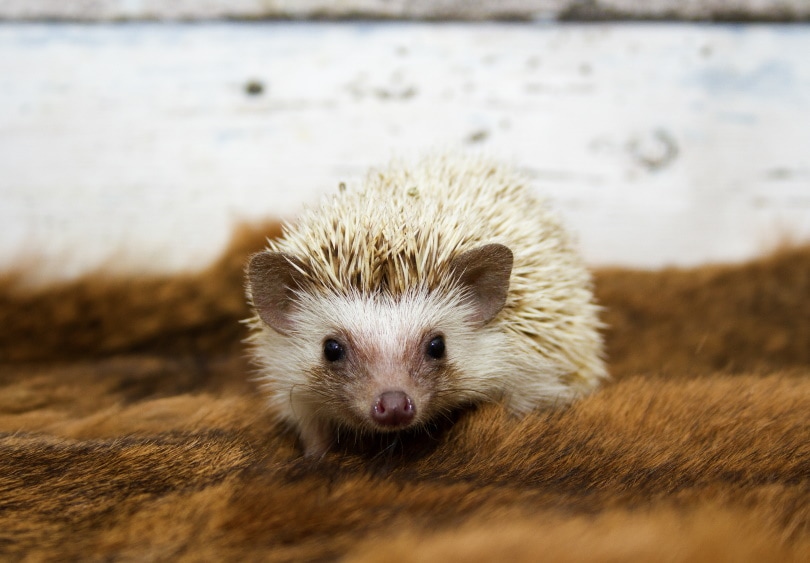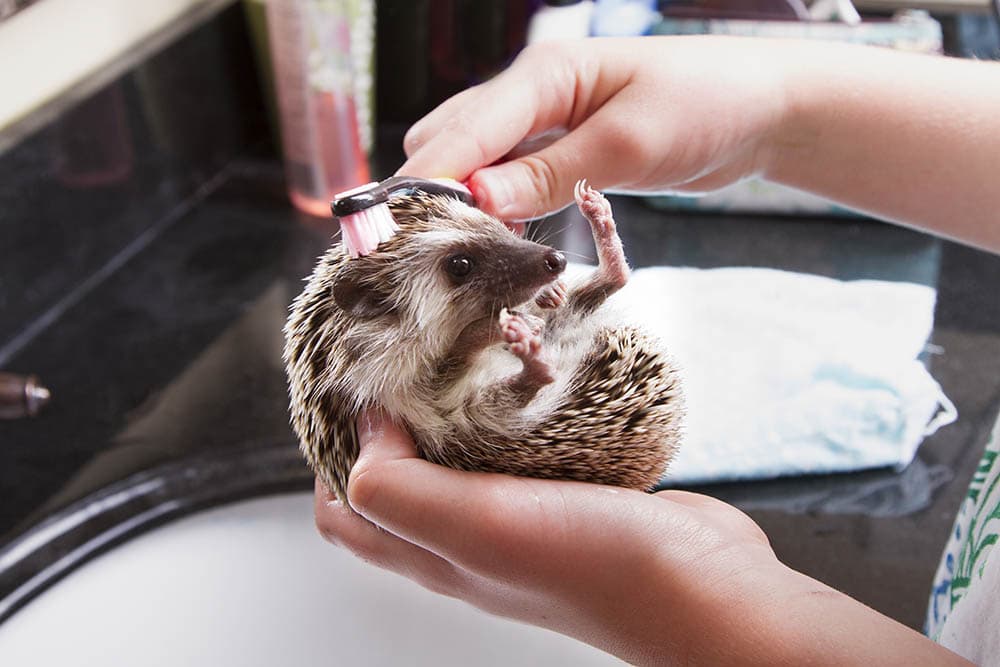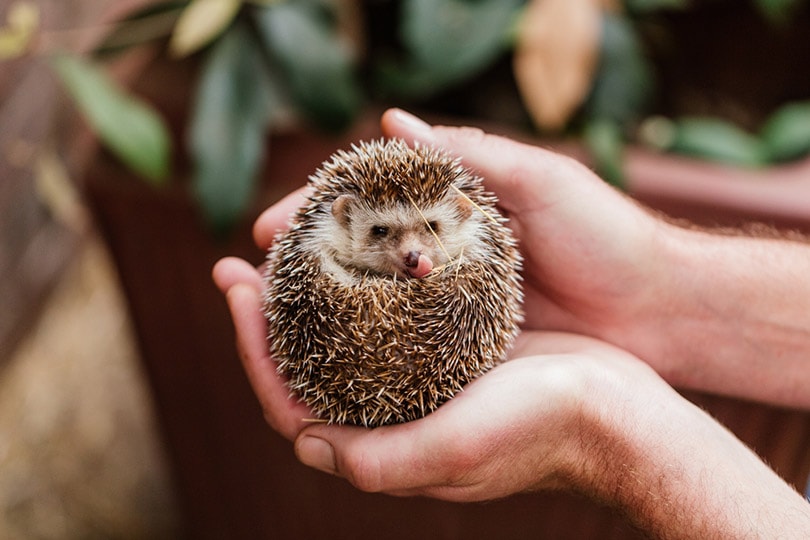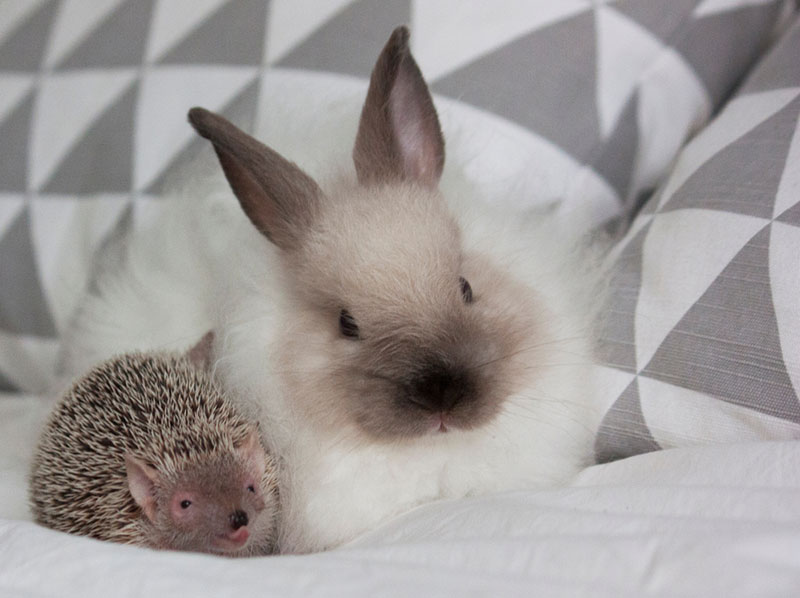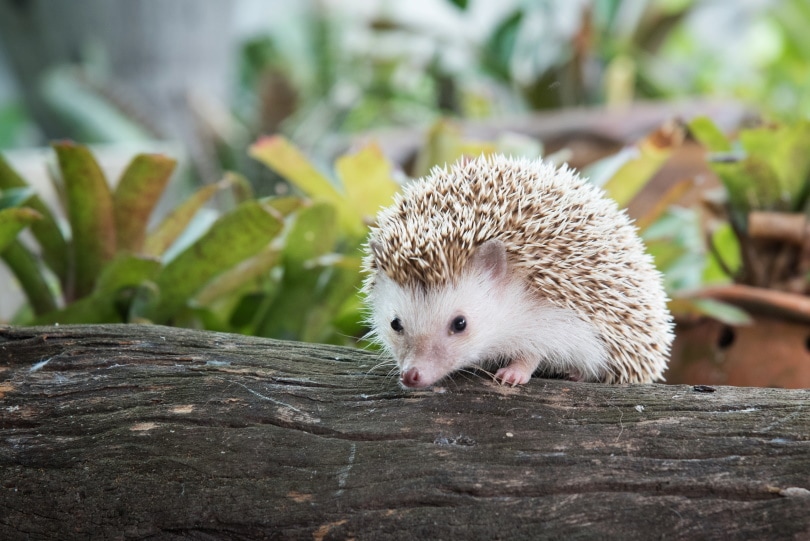
Hedgehogs may be small, but that doesn’t mean that they can’t put up a fight when face-to-face with a predator. You’re probably wondering how well a creature so small can protect itself. Will a hedgehog actively engage in a fight with a predator? Will they curl into a ball and roll off into the sunset? We have the answers you’re looking for.
Keep reading to find typical ways a hedgehog will protect itself when in the face of danger.
The 7 Ways Hedgehogs Protect Themselves
1. They Flee
Hedgehogs are very small creatures in the animal world. They’re not necessarily known for their fierceness toward humans or other creatures and would much rather avoid conflict. That’s why fleeing away from predators is a common mode of protection for them.
When hedgehogs sense they’re in danger, they’ll assess whether it’s worthwhile for them to stay and try to fight or run off. If they see a bird of prey circling them from above, they might choose to duck into a close burrow and hide out until they deem it’s safe to come out.
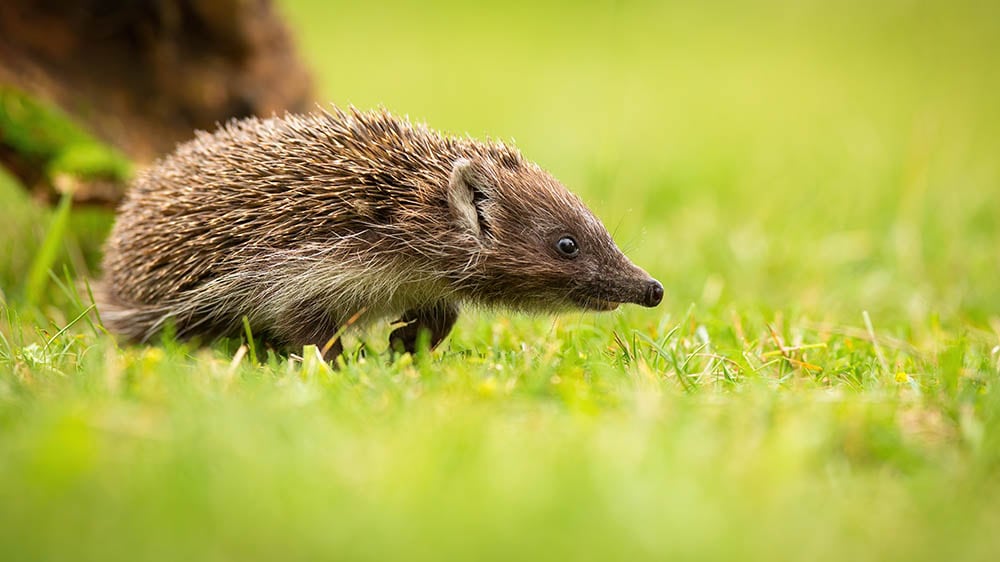
2. They Roll into a Ball
Sonic the Hedgehog is known for his trademark move where he curls himself into a ball and dashes his way through maps. This move is based loosely on what hedgehogs do in real life when they see predators. While you won’t see a hedgehog rolling his way through your home or garden in a ball, they do curl up in on themselves when they sense a nearby predator.
When hedgehogs roll into a ball, they pull all their limbs in and protect their head and stomach from predators. All that is left is a small, spiky, and intimidating-looking ball. Biting this spiky ball or picking them up is rather unpleasant, so most predators will be turned off immediately. The circular-shaped muscles that make this curling defense possible also prevent predators from opening up the hedgehog when it’s in this position.
Hedgehog spines have between 3,000 and 5,000 very sharp quills on them. When they’re curled into their ball, these spiky quills push outward and interlock to create a dense spiny armor of sorts.
While the ball technique is their most effective attack, it does have its downsides.
Once hedgehogs are curled into themselves, they become immobile. They are not able to escape and have to stay in this position until they deem it’s safe to come out of it.
Certain predators are not turned off by the spikes like some birds and reptiles. The spikes are no match for venomous snakes, and birds of prey can pick up the spiky ball and drop it.
3. They Use Their Quills
Hedgehogs can also use their quills as a means of protection when they’re not rolled up into a ball. When they sense a threat nearby, their quills will bristle and interlock with one another. This provides a sharp shield of armor that works well to protect themselves from predators.

4. They Hiss
Hedgehogs can be noisy little things if provoked.
Before they curl into their spiky ball, they might hiss or click to try to intimidate their predators. While rare, they can even create a sound that is similar to screaming, though they usually only do this if they’ve been hurt or are very angry.
When a hedgehogs’ space has been encroached upon by a predator, they often start with a warning sound that’s similar to clicking. They’ll make the sound louder if the perceived threat doesn’t leave upon hearing it.
If the clicking noise doesn’t work to ward off predators, they’ll start to hiss.
5. They Self-Anoint
Self-anointing is an interesting hedgehog behavior. Hedgehogs will randomly start licking their spines for no reason at all sometimes. While they’re licking themselves, their mouths will begin to foam and deposit this foam all over themselves. They often contort themselves into weird positions so they can reach every inch of their backs.
This behavior is pretty common, and, while there doesn’t seem to be an exact reason for it, animal behaviorists have a few guesses why hedgehogs self-anoint.
One of the working theories is that hedgehogs display this behavior because they’re trying to mask their scent. They’re trying to hide their natural scent, the one that predators can sniff out. The effectiveness of this as a means of protection is debatable.
Another working theory for self-anointing is that hedgehogs might be trying to coat their spines in this foam as a means of protective coating. Hedgehogs are quite resistant to a wide range of toxins in the wild and can eat many different animals that are inedible to other creatures. The theory here is that if wild hedgehogs can eat semi-toxic animals, their saliva must have some sort of toxicity in it, too. When they rub their foamy saliva all over themselves, they add another layer of protection from predators.
6. They Rely on Camouflage
There’s a reason that porcupines are the colors they are. Their neutral coloring assists hedgehogs in the wild with blending into their environment. If they can avoid conflict in the first place, there won’t be a need to bristle their quills, roll into a ball, self-anoint, or run away. Camouflaging acts as the first line of defense and is especially useful when it comes to predators that aren’t deterred by the hedgehog’s quills like snakes or birds.
7. They Bite
Hedgehogs can bite to protect themselves if it comes down to it. They have 36 very tiny but extremely sharp teeth that can do damage if necessary. Hedgehogs typically use biting as an absolute last resort, but they can become aggressive if they’re threatened and have no other way to protect themselves.
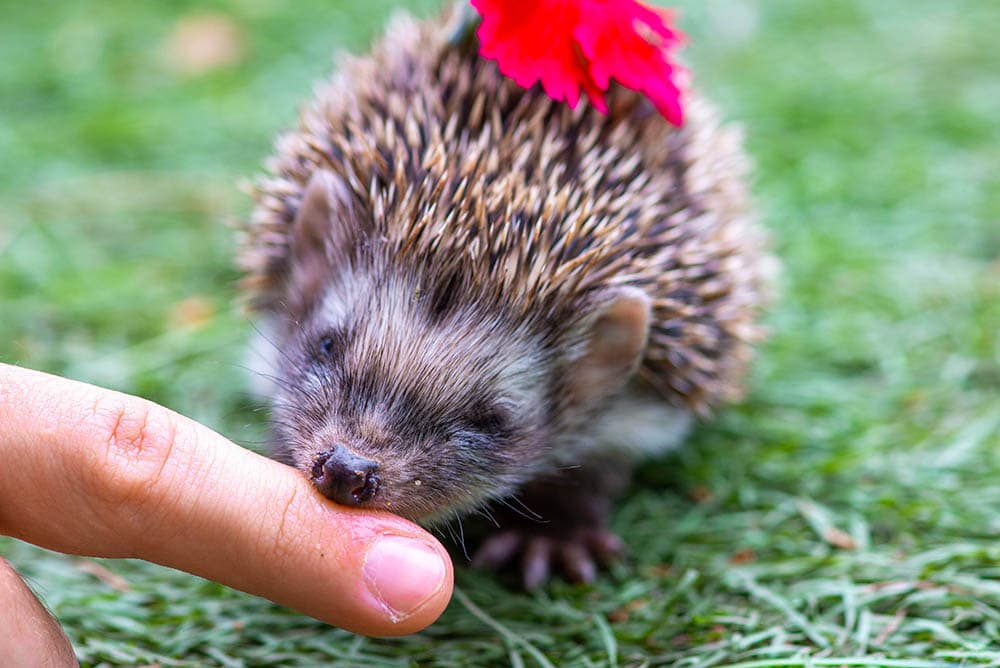
What Are Hedgehogs’ Predators?
Hedgehogs make it difficult for predators to want to attack them, but some creatures are not deterred by their defense mechanisms.
In the wild, predators like owls and eagles watch from above until the hedgehog looks vulnerable. They will then swoop in for the kill, not giving the hedgehog a chance to protect itself at all. Apex predators like lions, hyenas, and leopards might attack a hedgehog if given the chance.
Garden hedgehogs are often attacked by badgers, foxes, and mongooses. Badgers are one of the hedgehogs’ primary predators. Their strength and dexterity make it easy for them to uncurl a rolled-up hedgehog to get at their belly.
Snakes are ambush predators that wait for their prey to be unaware before incapacitating them with their venom or coiling around them. Hedgehogs are resistant to snake venom but can be taken down by it if it is coming in large quantities to the face or feet.
Lizards are much less of a threat to hedgehogs than snakes, but some will raid burrows to eat hoglets. Domestic cats, too, will target hoglets if given the opportunity.
Aside from animal predators, hedgehogs are often killed by automobiles. Estimates suggest that as many as 335,000 hedgehogs are killed on British roads every year.
Final Thoughts
Though hedgehogs may be small, they have several strong defense mechanisms that can protect them from their predators. Running away is the hedgehog’s greatest mode of protection though they aren’t known for their speed. Perhaps their most effective defense when face-to-face with a predator, though, is to roll into a ball to make themselves appear as scary and unappealing as possible.
Featured Image Credit: Thanisnan Sukprasert, Shutterstock

